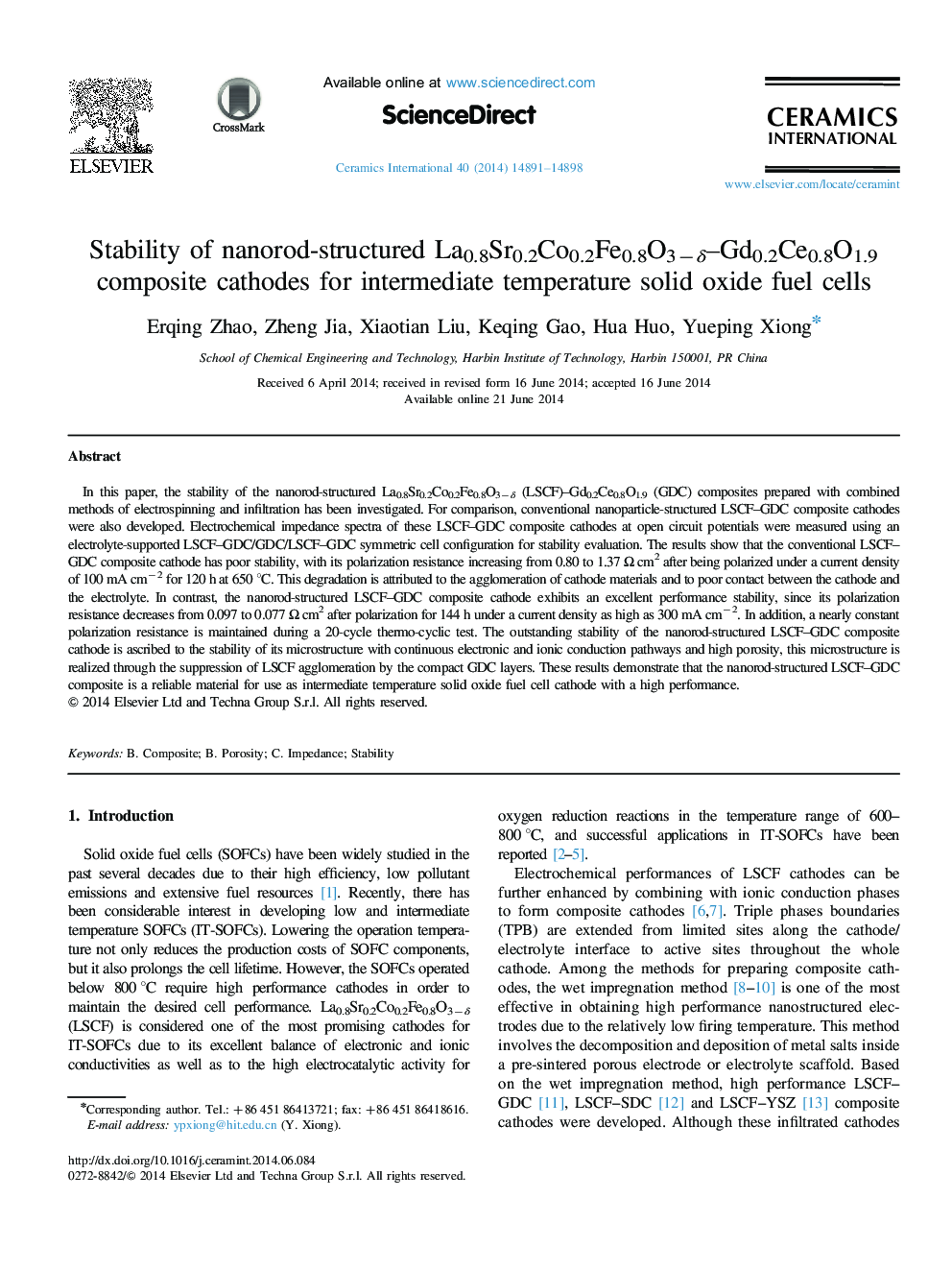| Article ID | Journal | Published Year | Pages | File Type |
|---|---|---|---|---|
| 1461232 | Ceramics International | 2014 | 8 Pages |
In this paper, the stability of the nanorod-structured La0.8Sr0.2Co0.2Fe0.8O3−δ (LSCF)–Gd0.2Ce0.8O1.9 (GDC) composites prepared with combined methods of electrospinning and infiltration has been investigated. For comparison, conventional nanoparticle-structured LSCF–GDC composite cathodes were also developed. Electrochemical impedance spectra of these LSCF–GDC composite cathodes at open circuit potentials were measured using an electrolyte-supported LSCF–GDC/GDC/LSCF–GDC symmetric cell configuration for stability evaluation. The results show that the conventional LSCF–GDC composite cathode has poor stability, with its polarization resistance increasing from 0.80 to 1.37 Ω cm2 after being polarized under a current density of 100 mA cm−2 for 120 h at 650 °C. This degradation is attributed to the agglomeration of cathode materials and to poor contact between the cathode and the electrolyte. In contrast, the nanorod-structured LSCF–GDC composite cathode exhibits an excellent performance stability, since its polarization resistance decreases from 0.097 to 0.077 Ω cm2 after polarization for 144 h under a current density as high as 300 mA cm−2. In addition, a nearly constant polarization resistance is maintained during a 20-cycle thermo-cyclic test. The outstanding stability of the nanorod-structured LSCF–GDC composite cathode is ascribed to the stability of its microstructure with continuous electronic and ionic conduction pathways and high porosity, this microstructure is realized through the suppression of LSCF agglomeration by the compact GDC layers. These results demonstrate that the nanorod-structured LSCF–GDC composite is a reliable material for use as intermediate temperature solid oxide fuel cell cathode with a high performance.
